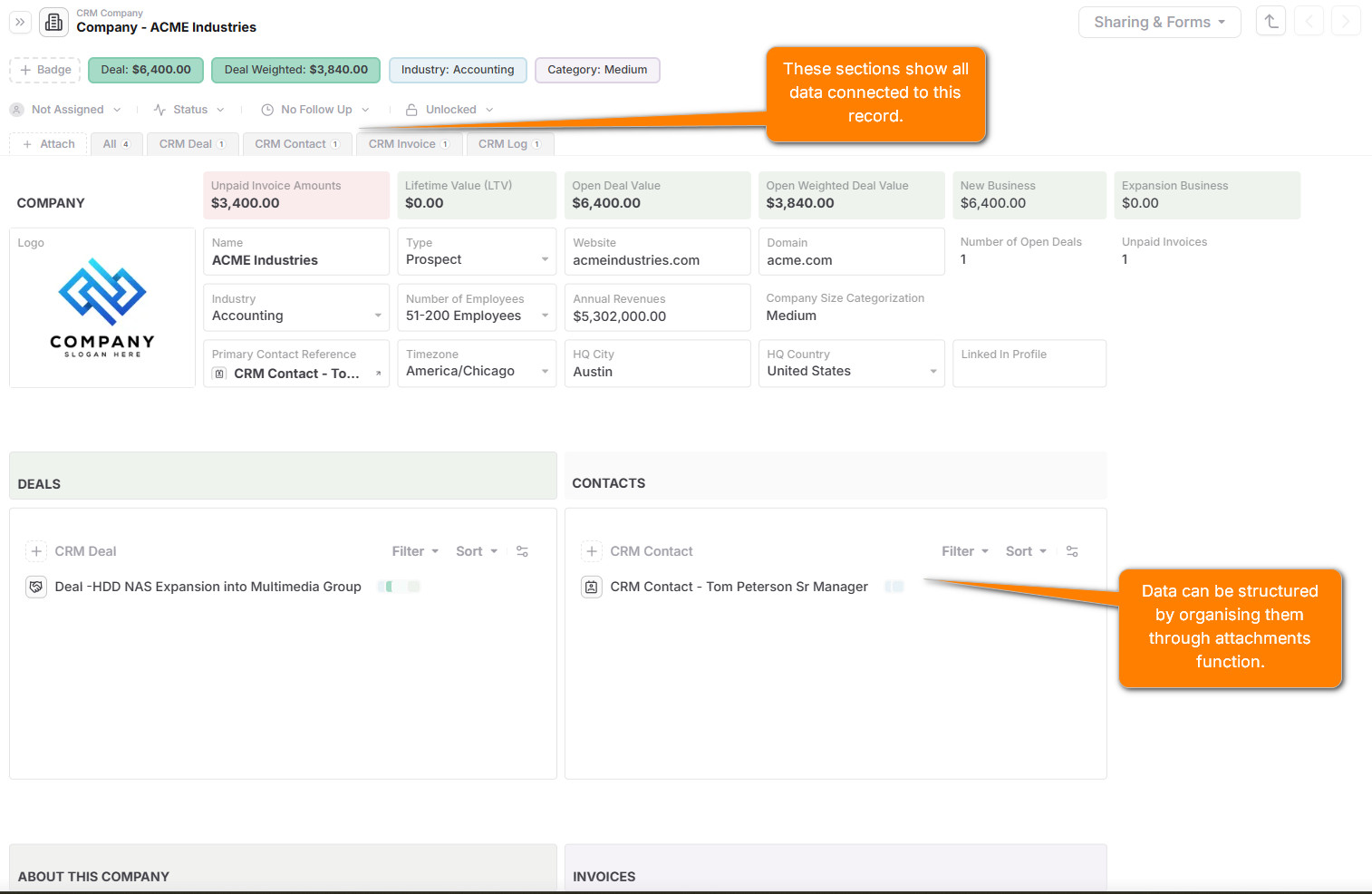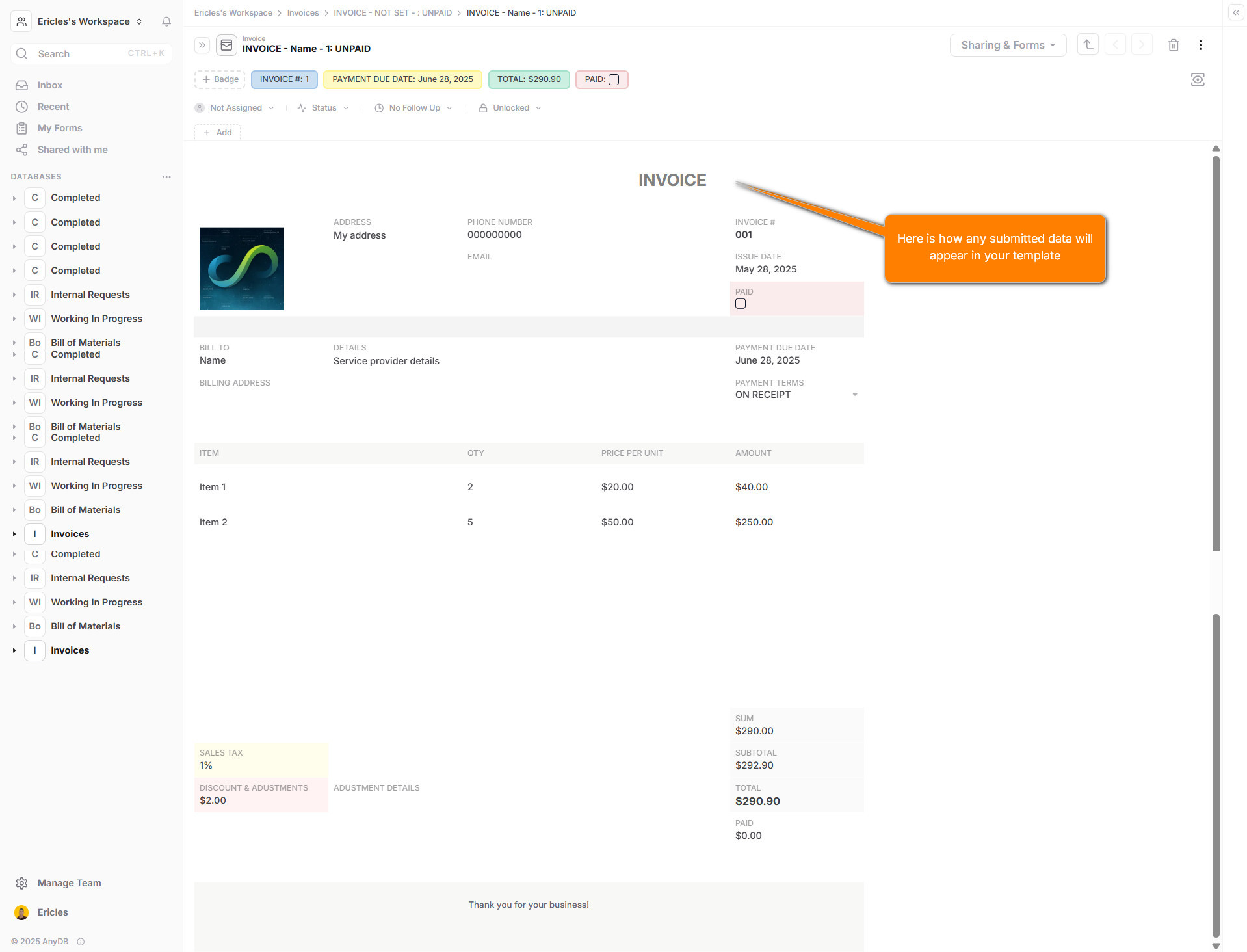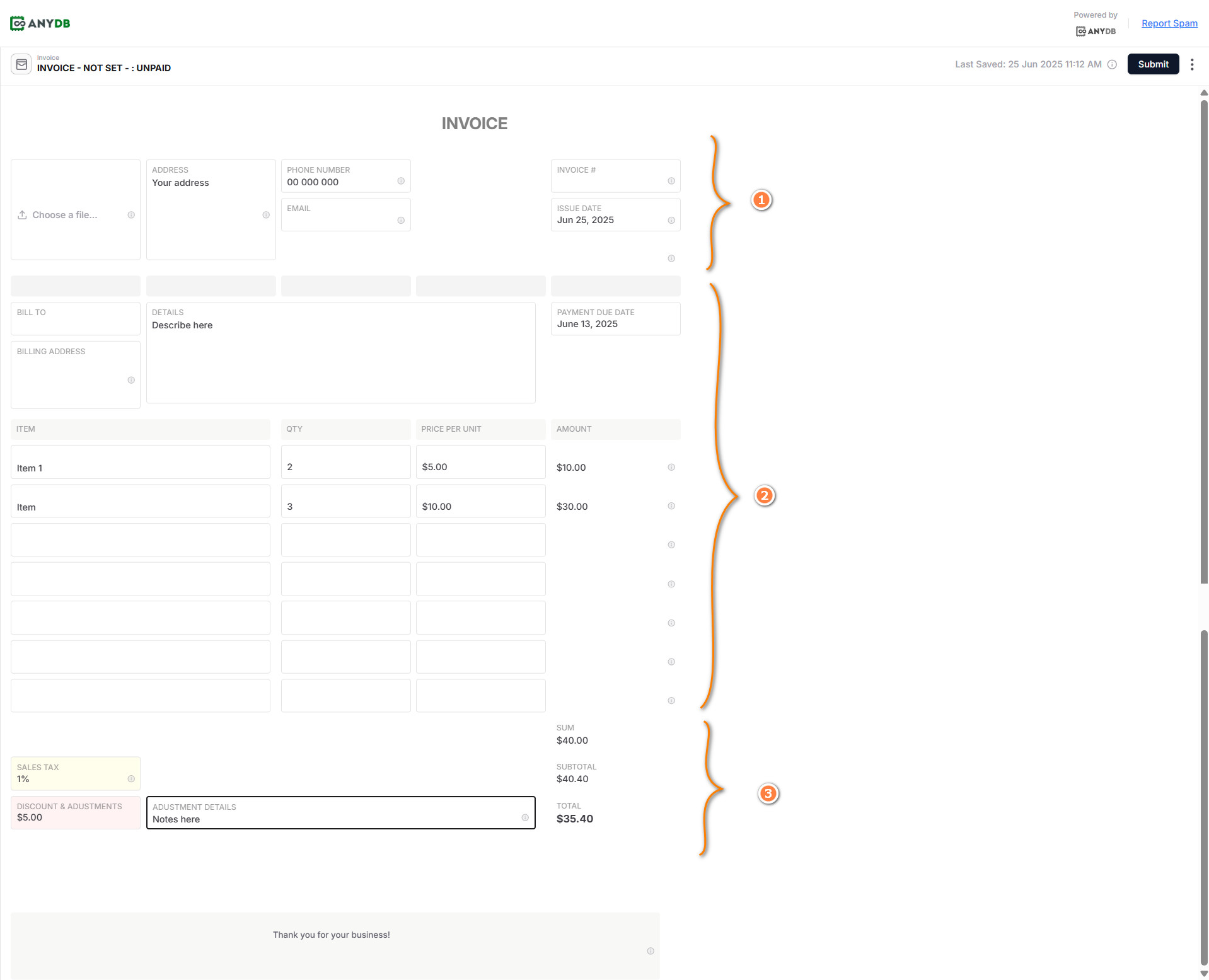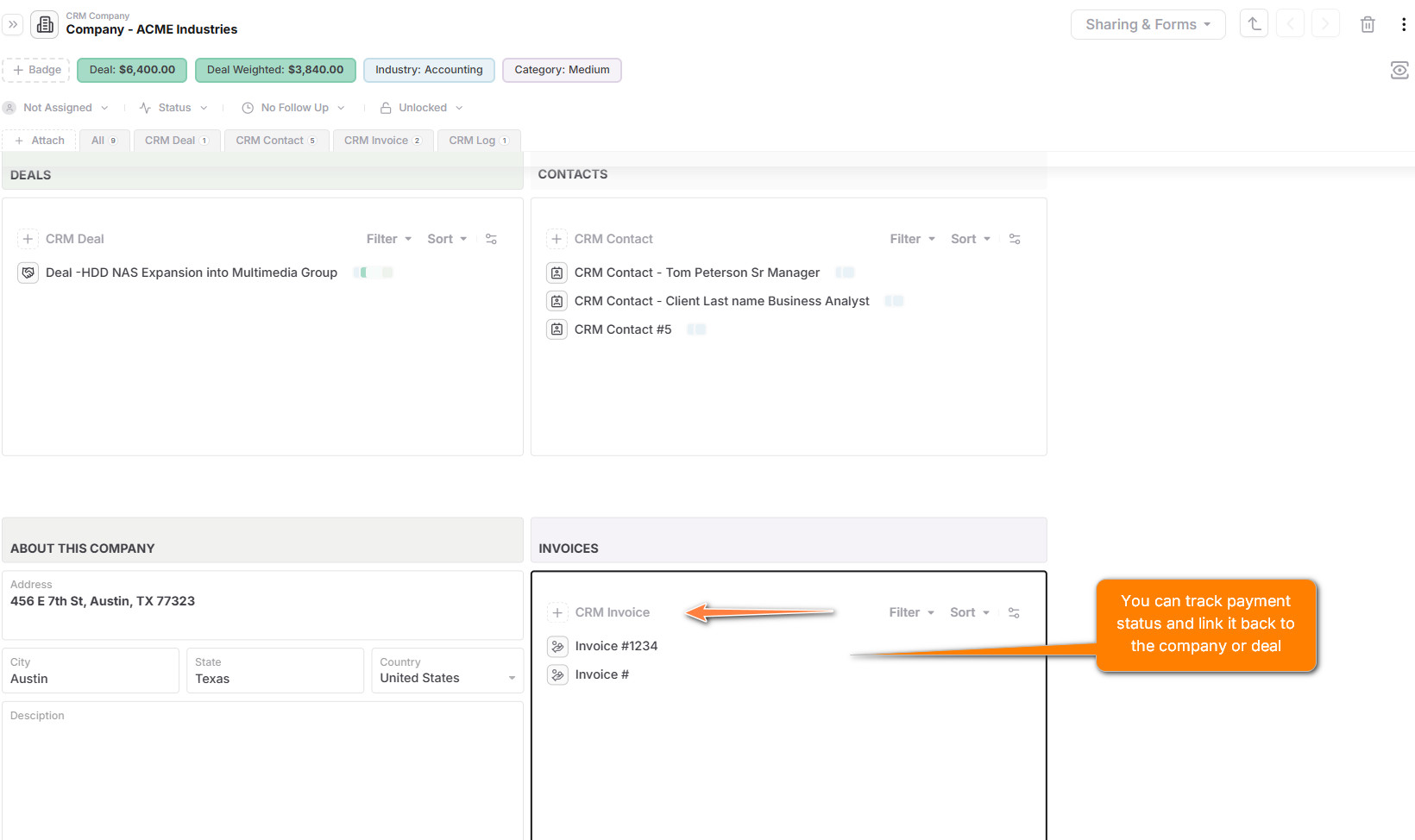CRM with AnyDB
Overview
This guide shows how to use AnyDB as a flexible, end-to-end CRM (Customer Relationship Management) system. You'll learn how to manage companies, contacts, deals, interactions, and invoices using structured templates that connect seamlessly—providing your team with a real-time, customizable view of your entire sales pipeline.
Business Problem
Traditional CRM systems are often rigid, expensive, and hard to customize for different workflows. Sales, marketing, and support teams struggle with scattered data, lack of visibility, and disconnected tools that don’t reflect how they actually work.
Solution Summary
With AnyDB, you can:
- Track companies, contacts, deals, communications, and invoices in one unified system
- Customize templates to match your exact sales process and terminology
- Link data across clients, team members, and pipeline stages
- Assign ownership, set follow-up reminders, and track progress
- Build dashboards to monitor performance, revenue, and pipeline health
Step-by-Step Instructions
1. Add a New Company
- Navigate to the CRM Companies database
- Go to New Database
- Click + New Item
- Click on Optional: Start with our pre-built solution.
- Fill out fields like name, industry, company size, website, and revenue
- Link contacts, deals, and invoices to the company as you grow the relationship

2. Create a Contact
In the CRM Company template:
- Go to the CRM Contacts section
- Click + New CRM Contact
- Add contact details: full name, title, department, email, phone, and LinkedIn
- Link the contact to their associated company
3. Track a Deal
Increase your chance of closing sales by doing the following:
- In the CRM Company database, click +CRM Deal
- Define the opportunity: deal name, potential value, type (new/expansion), expected close date
- Choose the sales stage (e.g., Prospect, Proposal, Negotiation, Closed Won/Lost)
- Automatically calculate weighted value based on probability
- Assign ownership and link it to a company and contact
4. Log an Interaction
Record your Customer Relationship activities and events. Here is how:

- In the CRM Logs database, record emails, calls, meetings, or texts
- Add date, duration, direction, subject, notes, and file attachments
- Link the log to a company and/or contact for full communication history
5. Create and Send an Invoice
Request for payment, record accounting transaction and keep tax compliance by creating an invoice record.
- Use the CRM Invoice template to bill the customer

- Auto-fill details from deals or contacts
- Add line items, tax, discounts, and due dates

- Track payment status and link it back to the company or deal

To see how to manage invoice records, you can check out here: Invoice Management
Data Model & Structure
| Field | Description |
|---|---|
| Company Name | Client or organization name |
| Contact Name | Full name of associated individual |
| Deal Stage | Sales pipeline stage (e.g., Demo, Negotiation) |
| Deal Value | Expected or closed deal amount |
| Probability | Stage-based close likelihood |
| Invoice Status | Paid / Unpaid / Overdue |
| Follow-Up Date | Next scheduled action or reminder |
| Interaction Type | Email, Call, Meeting, Text |
| Assigned To | Sales rep or account manager |
Reporting & Views
Use filters and saved views to track:
- Active deals by owner or stage
- Deals by close date, value, or probability
- Contacts by company, region, or role
- Recent communications and last contact date
- Overdue invoices or unpaid balances
Build dashboards to monitor:
- Total pipeline value and conversion rates
- Forecasted revenue using weighted deal values
- New vs. expansion revenue
- Sales performance by rep, team, or region
Sharing & Collaboration
- Assign ownership to sales reps or account managers